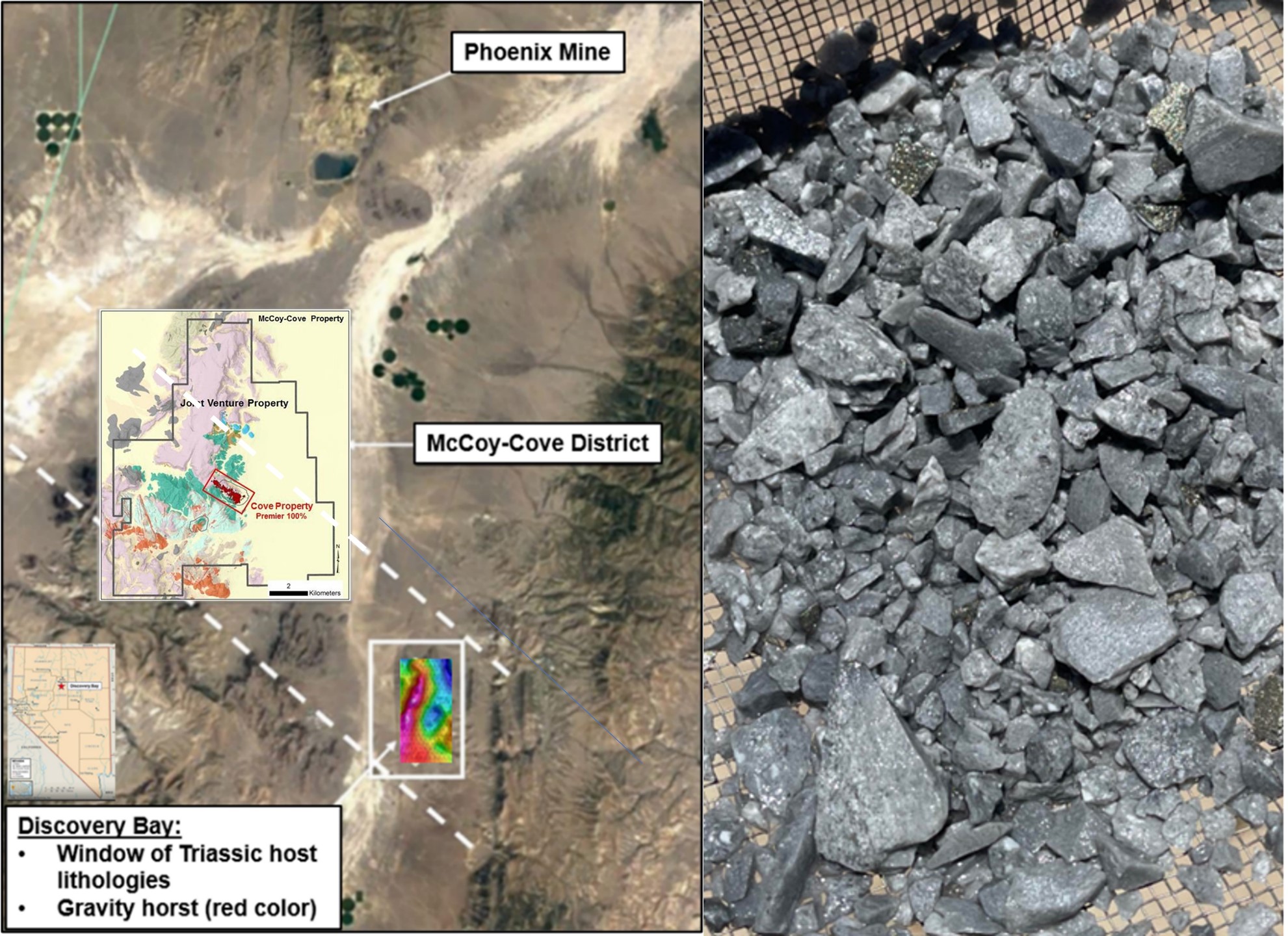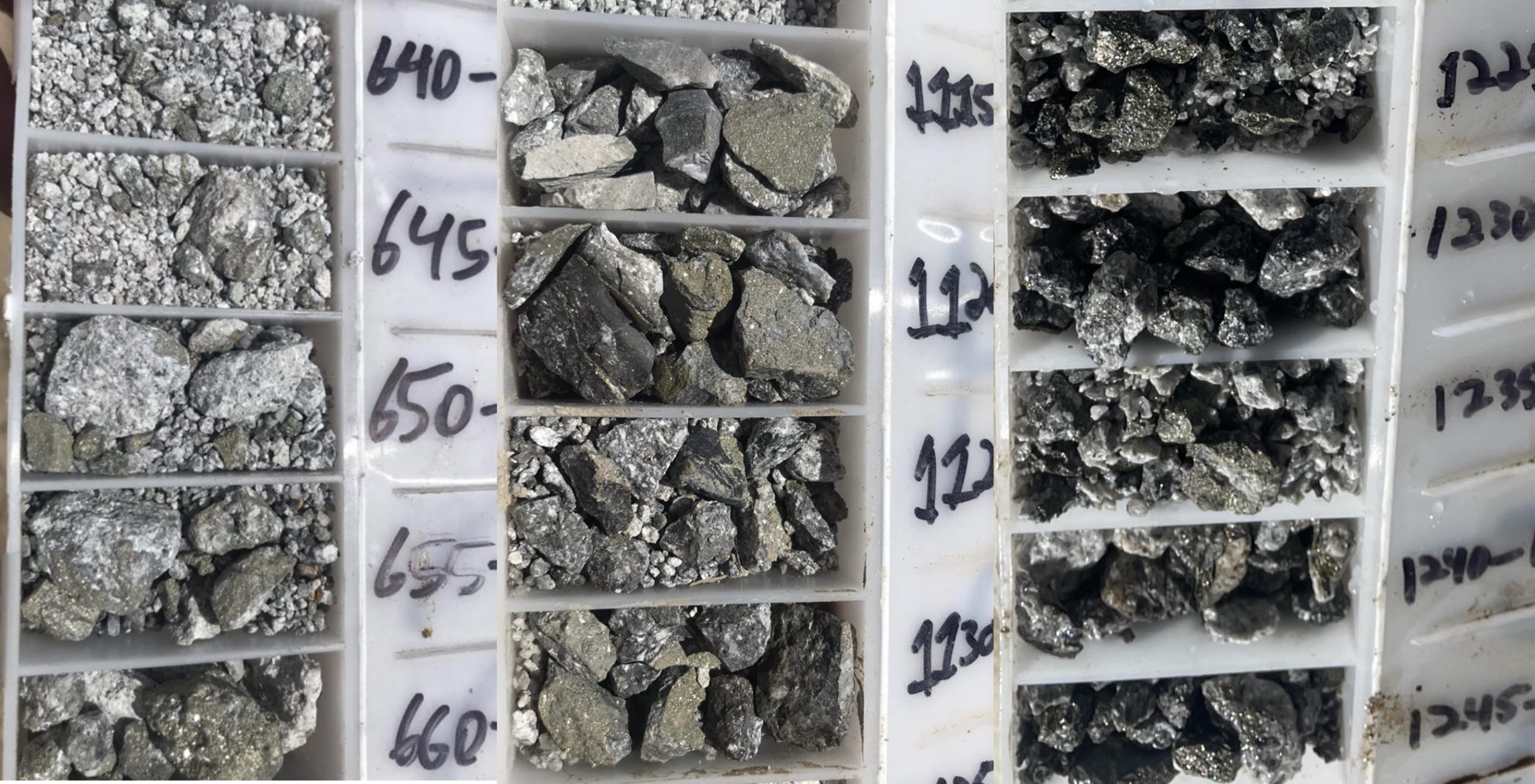Overview
The 100%-Company-owned project comprising 22 unpatented lode mining claims is located 46.6 kilometers (28.9 miles) south of the Battle Mountain Mining District and approximately 14 km (9 miles) southeast of I-80’s McCoy-Cove gold property in Lander County, Nevada (see Figures 1 & 3).
The Project area lines up perfectly with a North-South-striking Structural Corridor, which is known to host mega-sized gold deposits, that stretch from Turquoise Ridge (Twin Creeks) to the Phoenix and Lone Tree gold mines, down to I-80’s McCoy-Cove gold deposits and NV Gold’s nearby 305 Project (see Figure 2). Most of the Property’s surface is covered by younger volcanic rocks and gravel, but an almost unexplored window of Triassic Osobb Mountain Quartzite and Cane Springs Limestone, host lithologies at McCoy, are exposed approximately 3 kilometres (1.24 miles) to the north of the Property. NV Gold completed 2 RC (“reverse circulation”) holes totaling 719.3 meters (2,360 feet) in early-2022, due to unforeseeable drilling problems, the Company had to abandon the drilling program. However, even so with a shortened drilling program, the Company successfully managed to discover an extensive zone of alteration. The two, “1-kilometer-spaced” RC holes encountered 100’s of feet of intensely sulfide-bearing intrusive rock down to the end of each hole (see Figures 3 & 4). This pervasive sulfide zone is interpreted to be capping and being part of a deeper-seated McCoy-Cove (Carlin-type) gold system! NV Gold’s future goal, supported by an extensive IP (Induced Polarization) chargeability and mercury vapor anomalies, is to drill through the sulfide cap to test underlying Paleozoic host lithologies for high-grade gold mineralization, depending on funds and drill equipment availability.

Figure 1: Location of NV Gold’s “305 Project” approximately 47 kilomoters south of Battle Mountain in Lander County, Centrlal Nevada
Figure 2: 305 Project showing drill site TOF-1 (looking southeast)
Figure 3: 305 Project in correlation to McCoy-Cove District and a close look on intensely silicified rock and gold pathfinders-anomalous sedimentary rocks.
Figure 4: Hundreds of feet of sulfidic intrusive rock.



